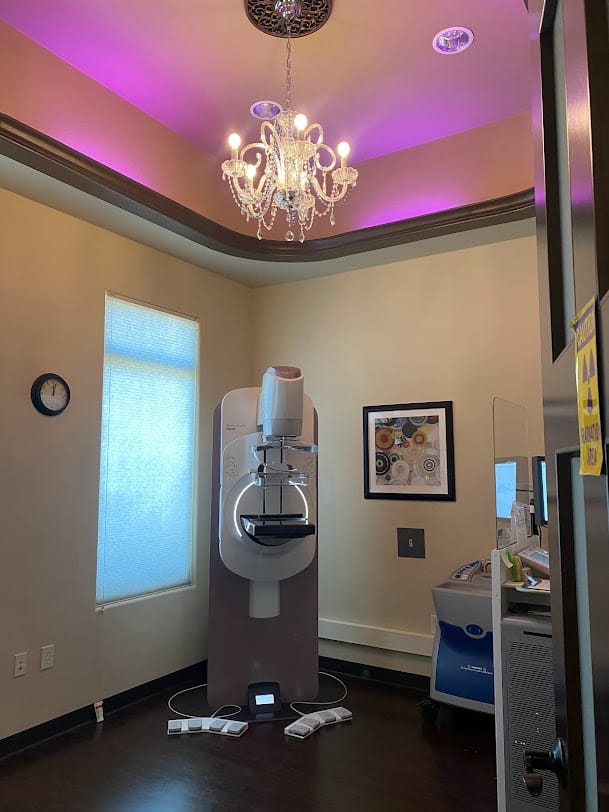
Mammography services play a crucial role in maintaining breast health, offering women a reliable way to detect potential issues early. Regular screenings can help identify abnormalities before they develop into more serious problems, significantly improving treatment outcomes. These services are not just about technology; they represent a proactive approach to health and wellness. By empowering women to take charge of their breast health, mammograms foster a sense of control and awareness. Ultimately, investing in mammography is an investment in a woman’s health, ensuring she has the best chance at a healthy future.
Understanding Mammography: What to Expect
Mammography is a specialized imaging technique designed to examine breast tissue for signs of abnormalities. The procedure typically involves placing the breast between two plates that compress it, allowing for clearer imaging. While this may sound uncomfortable, the process is quick, lasting only about 15 to 30 minutes. Many facilities now offer digital mammography, which provides clearer images and can even detect smaller tumors. Understanding what to expect can alleviate anxiety and encourage women to prioritize their breast health through regular screenings.
What is Mammography
Mammography is a medical imaging technique that uses low-energy X-rays to create detailed images of breast tissue. This essential screening tool helps in detecting early signs of breast cancer and other abnormalities, enabling timely intervention. The images produced can reveal tiny tumors and changes that might not be felt during a physical exam. Regular mammograms are crucial for women’s health, as they provide a proactive approach to breast care and wellness.
The Mammography Procedure Explained
The mammography procedure involves positioning the breast between two plates, which compresses the tissue to obtain clear images. Compression is necessary to spread the breast tissue, making it easier to identify any abnormalities. The entire process typically lasts around 15 to 30 minutes, and while it might be slightly uncomfortable, it is essential for accurate results. Understanding the procedure can help ease any apprehension and encourage women to take charge of their breast health.
Digital Mammography: A Technological Advancement
Digital mammography represents a significant advancement in breast imaging, providing clearer and more detailed images than traditional film mammograms. This technology allows radiologists to manipulate images for enhanced analysis, improving the detection of small tumors. Additionally, digital mammography can reduce the need for repeat images, making the screening process more efficient. By utilizing this modern approach, women benefit from increased accuracy and improved outcomes in breast cancer detection.
Addressing Mammography Anxiety
It’s natural for women to feel anxious about getting a mammogram due to concerns about discomfort or potential findings. However, understanding the procedure can help alleviate these fears. Many facilities employ trained staff to guide women through the process, providing reassurance and support. Taking the time to discuss any worries with healthcare providers can further ease anxiety and promote a positive experience, encouraging women to prioritize regular screenings for their breast health.
The Importance of Regular Screenings
Regular mammograms are vital for early detection and prevention of breast cancer. The American Cancer Society recommends women begin annual screenings at age 40 or earlier if they have risk factors. By adhering to screening guidelines, women can catch potential issues early, leading to better treatment outcomes. Emphasizing the importance of regular screenings empowers women to take proactive steps toward their health, ensuring they remain vigilant about their breast health and well-being.
The Importance of Early Detection
Early detection of breast cancer significantly increases the chances of successful treatment. Mammograms can reveal changes in breast tissue years before symptoms appear, allowing for timely intervention. Statistics show that when breast cancer is detected early, the five-year survival rate is around 99%. Regular screenings can lead to the discovery of non-invasive cancers and precursors, which can be managed effectively. By prioritizing mammography, women empower themselves to catch potential health issues early, leading to better outcomes and peace of mind.
Risk Factors for Breast Cancer
Understanding the risk factors for breast cancer is essential for women to make informed health decisions. Factors such as age, family history, genetic mutations, and lifestyle choices can influence one’s risk. Women over 40 are generally advised to begin regular screenings, as risk increases with age. Additionally, personal choices like alcohol consumption, smoking, and obesity can also contribute to breast cancer risk. Awareness of these factors helps women discuss their individual risk profiles with healthcare providers, guiding decisions about screening frequency and preventive measures.
The Role of Technology in Mammography
Advancements in technology have transformed mammography into a highly effective tool for detecting breast cancer. Digital mammography, for instance, offers sharper images and allows for enhanced analysis of breast tissue. Three-dimensional (3D) mammography, or tomosynthesis, provides a more detailed view by capturing multiple images from different angles, improving detection rates, especially in women with dense breast tissue. These innovations not only improve the accuracy of diagnoses but also enhance the overall experience for patients, making mammograms faster and more comfortable.
Overcoming Mammography Anxiety
It’s common for women to feel anxious about undergoing a mammogram. Concerns about discomfort, results, and the overall process can create apprehension. However, understanding the procedure and its significance can help alleviate these fears. Many facilities employ compassionate staff trained to guide patients through every step, offering reassurance and support. It’s important to remember that the discomfort is temporary and significantly outweighed by the potential health benefits. Women are encouraged to discuss their anxieties with their healthcare providers, who can provide additional resources and support.
Accessing Mammography Services
Accessing mammography services is a vital part of breast health but can sometimes present challenges. Factors such as location, cost, and insurance coverage can influence a woman’s ability to receive timely screenings. Many healthcare systems offer mobile mammography units to reach underserved areas, ensuring more women have access to these critical services. Additionally, various organizations provide financial assistance or free screenings for those without insurance. It’s essential for women to explore their options and advocate for their health, ensuring they can take advantage of available mammography services.
Beyond Mammograms: Comprehensive Breast Health
While mammograms are a crucial tool for early detection, comprehensive breast health involves more than just regular screenings. Women should also engage in self-examinations and maintain open communication with healthcare providers about any changes in their breasts. Lifestyle factors such as a balanced diet, regular exercise, and avoiding tobacco can significantly contribute to overall breast health. Educational resources, support groups, and awareness campaigns further empower women to take charge of their health. By combining mammography with a holistic approach, women can enhance their well-being and reduce their risk of breast cancer.
The Future of Mammography: Innovations on the Horizon
The field of mammography is continually evolving, with exciting innovations on the horizon. Research is underway to improve the sensitivity and specificity of breast imaging techniques, with the goal of reducing false positives and unnecessary biopsies. AI and machine learning are being integrated to assist radiologists in analyzing mammograms more accurately and efficiently. Additionally, there’s a growing focus on personalized screening strategies that consider individual risk factors, leading to tailored recommendations. These advancements promise to make mammography even more effective in the fight against breast cancer, ensuring better outcomes for women everywhere.
- Continuous Evolution: The field of mammography is constantly evolving, with ongoing research aimed at enhancing breast imaging techniques.
- Improved Sensitivity and Specificity: Innovations focus on increasing the accuracy of mammograms to reduce false positives and avoid unnecessary biopsies.
- Integration of AI and Machine Learning: Advanced technologies like AI and machine learning are being implemented to assist radiologists in more accurately and efficiently analyzing mammograms.
- Personalized Screening Strategies: There is an increasing emphasis on tailored screening approaches that take individual risk factors into account, leading to customized recommendations for women.
- Enhanced Outcomes: These advancements are expected to improve the effectiveness of mammography in the fight against breast cancer, resulting in better health outcomes for women.
Conclusion
Mammography is an essential tool for the early detection of breast cancer, offering women a proactive way to safeguard their breast health. At Eve’s Breast Center, we are committed to providing high-quality mammography services in a comfortable and supportive environment, ensuring our patients receive the best care possible. Regular screenings can lead to early intervention, increasing the likelihood of successful treatment.
If you’re in Southlake, TX, and looking for a trusted center for your breast health needs, Eve’s Breast Center is here to help. Visit us today and take the first step towards prioritizing your well-being.


